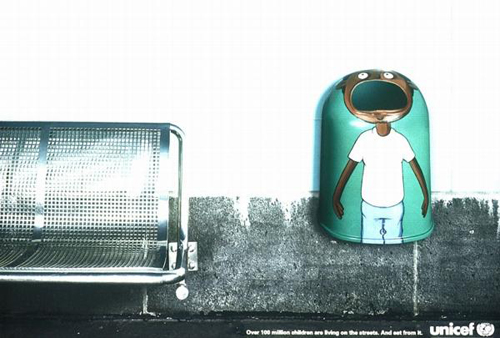
10 INFURIATINGLY GREED CHARITIES
Not all charities are created equally; at least, not all of them spend equally. The ways in which a charity spends its donors’ dollars have been coming under increasing scrutiny in the past few years, as wave upon wave of scandals has rocked the nonprofit sector: greedy CEOs, misappropriated funds, and dirty dealings that would seem more fitting to a corporate boardroom or political campaign. The website Charity Navigator was created in 2001 as a guide for potential donors. The site evaluates charities based on a number of a criteria, and gives out the details of informational tax returns, letting people know how their benevolent donations are being spent. We’ve compiled a list of their seven most untrustworthy charities, with an additional three organizations whose scandalous greed may surprise you.
Salvation Army

The Salvation Army portrays itself as a humble religious charity, doing missionary work that reflects the gospel of Jesus. In reality, the SA is very much a business, and despite its “not for profit” status and evangelizing, the organization does fairly well for itself. Because the Salvation Army is a church, it’s exempt from declaring its revenues. In addition, the organization owns an unknown amount of high-end real estate, in which it houses its high-ranking officers; some of the houses go for upwards of $900,000. They’ve also been accused of selling off properties that have been bequeathed to them for profit, even displacing poor and vulnerable populations to do so. In England, the SA came under public scrutiny when it teamed up with the textile company Kettering Textiles Limited to run a recycled clothing scheme; it earned the organization about $26 million, and the business’s directors a combined $16 million over three years.
The SA is also not a fan of turning the other cheek. In 2006, the SA went to court with Greenpeace over the latter’s share of a $264 million dollar estate. The estate, according to the will of its owner, Hector Di Stefano, was to be divided equally among eight charities upon his death. Because of a clerical error, the Salvation Army demanded that Greenpeace was not entitled to its share of the bequest, and that the $33 million should instead be divided equally to the other beneficiaries named in the will, itself included. The two organizations eventually settled out of court.
Texas Heart Institute

The Texas Heart Institute, founded in 1962, is dedicated to researching the prevention and treatment of cardiovascular disease. It is also dedicated to lining its executives officers pockets. The CEO of the nonprofit has an annual salary of $466,000, while the president and founder makes an incredible $600,000. Together, their salaries comprise nearly 3.5% of the charities annual budget.
Fine Arts Museum of San Francisco

The Fine Arts Museums of Chicago (comprised of two separate museums, the de Young and the Legion of Honor) have an annual revenue of $31,860,497. The President of the organization earns about $365,000 a year. About half of the Museums’ revenue goes towards fundraising efforts and administrative costs.
Disabled Veteran’s Association

The Disabled Veteran’s Association claims that it is “Supporting the unsung heroes that fought for our freedom.” In reality, the charity is mostly supporting professional fundraisers, workers that generally work for profit-driven agencies. Nearly 95% of the DVA’s revenues go towards paying these people; the charity spends about $.84 fundraising for every dollar that they make.
Coalition Against Breast Cancer

The Coalition Against Breast Cancer claims that it sincerely believes that breast cancer can be eradicated. Its efforts seem to be somewhat token, however: only 18% of its revenue goes towards actual prevention, diagnosis, and support programs. The rest of it is spent on fundraising and administrative costs.
Children’s Charitable Fund

The Children’s Charitable Fund, an organization that roughly resembles the Make-A-Wish foundation, was given a poor rating by both Charity Navigator and the Better Business Bureau. It spends only 10% of its revenues on charitable programs, and has not shown itself to be either forthcoming or transparent with its finances. In addition, nearly 2% of revenues are given over to pay that CEO’s salary.
Martin Luther King, Jr. National Memorial Project Foundation
.jpg)
Is there anything worse than using the legacy of a great humanitarian — one who worked tirelessly to alleviate poverty and crusade for social justice — to try and make money? The CEO of the charity in charge of building MLK’s memorial makes $265,085, a full 6% of its annual revenues. Meanwhile, half of its revenues go right back into fundraising efforts, hosting lavish dinners and parties.
Children’s Charity Fund Inc.

The Children’s Charity Fund Inc. was founded in 1991. It claims to work to educate the public about the needs of disabled children, and by providing free medical equipment and referrals to families. However, according to Charity Navigator, only 5.6% of its revenues are going towards these programs. That comes out to about $77,000, which is actually less than its CEO’s salary.
The Nature Conservancy

The Nature Conservancy actually earns a fairly good rating on Charity Navigator: 58 points, or 3 out of 4 stars. It’s one of the oldest environmental nonprofit organizations in America, having been founded in 1951. It currently holds over 119 million acres of land, all over the world, and spends hundreds of millions of dollars in conservation efforts each year.
Critics, however, have been quick to point out that the land that is held isn’t always kept in anything even resembling pristine condition. The Nature Conservancy has been known to allow its big-business partners — including corporations like Dow Chemical, General Electric, American Electric Power– to use the land as they see fit, including mining and drilling in these supposedly “protected areas”. The Conservancy came under intense fire last year, in the wake of the Gulf of Mexico oil spill, when the Washington Post published an article detailing the close relationship between BP and the environmental charity. The Nature Conservancy has also been accused of selling its own land to its board members, and making profits off of land that was left in trust to the organization.
The Central Asia Institute

The Central Asia Institute is dedicated to supporting community education initiatives in Afghanistan and Pakistan. It was founded by Greg Mortenson, a former mountain climber, in 1996, after being inspired by the life-saving hospitality of a tiny Pakistani village. Mortenson detailed the dramatic beginnings of the charity, as well as several other adventures in fulfilling the school’s mission, in the bestselling memoir Three Cups of Tea. He’s an inspiring, almost saintly figure.
Or at least, he was. In April of 2011, 60 Minutes broke a story on Mortenson, alleging that the CAI had mishandled its donated funds and that Mortenson had actually fabricated several of the stories in his book. Jon Krakauer, a fellow author and former supporter of CAI, started digging into Mortenson’s stories after hearing from disgruntled donors and employees of the charity. In an interview on CBS, he said of Mortenson’s story, “It’s beautiful, and it’s a lie”.
If this weren’t enough, there is the troubling state of the CAI’s finances. The charity has had only one auditing in the past 14 years. Current investigations into its budget has shown that the organization spends far more money domestically promoting itself than it does on its actual mission of building and funding schools. There have been Additionally, Mortenson’s own finances are suspiciously intertwined with his charity’s. The CAI paid $1.7 million dollars in “book related expenses” in 2009, according to its financial records. This includes paying for all of Mortenson’s travel expenses, and buying thousands of books at retail prices for distribution at the events. Mortenson also received an honorarium of up to $30,000 for some of his lectures. None of the royalties from Mortenson’s books go to the charity; they are instead kept by Mortenson himself.
The CAI is being actively investigated by the Attorney General of Montana, where the organization is located. Mortenson is the subject of a lawsuit filed jointly by two former donors. Viking, who published Three Cups of Tea and its sequel Stones into Schools, is reviewing the claims made in both books. The world has become a slightly more cynical place. Considering, however, the lack of oversight in many charitable organizations, we can’t help but wonder if this could be for the best.
http://www.businesspundit.com/10-infuriatingly-greedy-charities/
